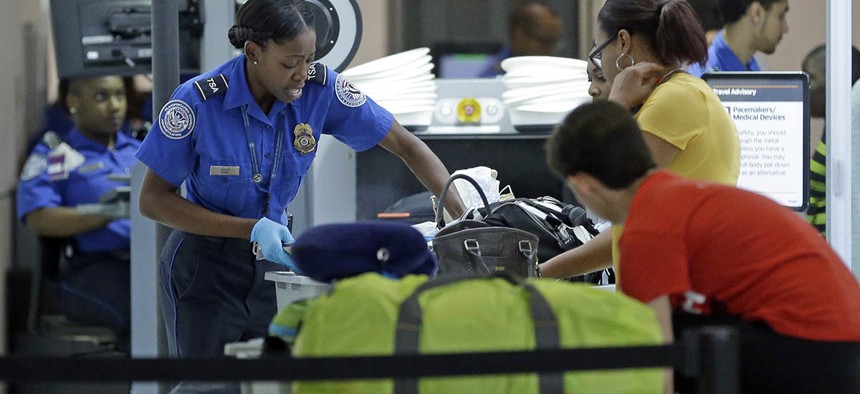TSA Wants to Expand Use of 3D Luggage Scanning Machines

A Transportation Security Administration officer checks travelers luggage to be screened by an x-ray machine at a checkpoint at Fort Lauderdale-Hollywood International Airport. Alan Diaz/AP
Keep your liquids in your luggage with this new scanner.
Going through the security line at the airport is never a fast or fun experience. And the complicated process for screening carry-on luggage doesn't make it any easier.
Luckily for impatient travelers tired of the process, the Transportation Security Administration is expanding its pilot program for three-dimensional luggage screening, Bloomberg reports.
This type of screening is more comprehensive than the standard machines. It uses computed tomography X-rays, which shoot hundreds of images of a bag from different angles so that the resulting images can be rotated 360 degrees.
What this means for travelers is that this could allow travelers to leave liquid and electronics in their bags, making security lines much quicker.
"I’ve watched them in operation,” TSA Administrator David Pekoske said to the Senate Commerce, Science and Transportation Committee on Wednesday. “They are a significant enhancement in security effectiveness."
While the pilot program was already due to expand, TSA decided to expand the expansion and will order 200 scanners in the next year.
One version is already set up at John F. Kennedy airport in New York City, but will soon be in major airports in Los Angeles, Chicago and Washington, D.C.
While 200 machines at 13 airports might seem like a lot, it's only about 10 percent of screening lanes in the U.S.



